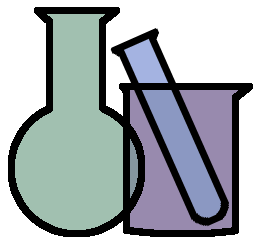Learning Outcomes for UNIT 4
Each student should have a good grasp of the following learning outcomes for unit 4. Unit 4 is assessed on Exam 4 which is on Tuesday 5/1/12 from 7-9 PM. Read the numbered points and self assess yourself on how well you know the topic.
Kinetics
Students will be able to...
- Understand the concept of rate of change associated with chemical change, recognizing that the rate of change for a chemical reaction can be determined by experimentally by monitoring the change in concentration of a reactant or product with time.
- Determine rate law of chemical change based on experimental data (Method of Initial Rates).
- Be able to identify the reaction order for a chemical change by analysis of data, or interpreting the rate law, or interpreting the units on k, or interpreting plotted data, or interpreting half-life vs conc behavior.
- Apply integrated rate equations to solve for the concentration of chemical species during a reaction of different orders.
- Understand the concept of mechanism and using rate law data predict whether or not a proposed mechanism is viable or not.
- Recall and explain why certain factors such as concentration, temperature, medium and the presence of a catalyst will affect the speed of a chemical change.
- Interpret a reaction coordinate diagram (aka: potential energy diagram) and determine if such a diagram supports a given mechanism, including the concept of the transition state and the reaction intermediate.
- Interpret a reaction coordinate diagram and determine how many steps a mechanism has AND which step is the rate-determining step. Also determine what the overall activation energy is.
- Understand the concept on activation energy in the context of the transition state and be able to calculate the activation energy given some experimental data.
- Recall, manipulate and properly employ the Arrhenius Law (equation) to determine various unknowns, including the new activation energy for a reaction running in the presence of a catalyst, the new rate constant for a reaction running at a different temperature and vice versa.
- Explain the function and purpose of a catalyst.
Topics are from Chapter 15, all sections except 7.
Nuclear
Students will be able to...
- Explain the macroscopic observables associated with nuclear change.
- Explain the microscopic or chemists view of nuclear change.
- Identify and define various types of nuclear transmutation including fission, fusion and decay reactions.
- Use proper isotopic notation to write down and balance a nuclear reaction.
- State and compare the differences and similarities between a nuclear change and a chemical change.
- Understand and explain the concept of ionizing radiation and distinguish between the three different types of radiation.
- Understand and explain the concept of isotopic stability including the band of stability.
- Understand the concept of rate of change and half life in the context of nuclear decay.
Topics are from Chapter 20, sections 1-3.
© mccord 2012

